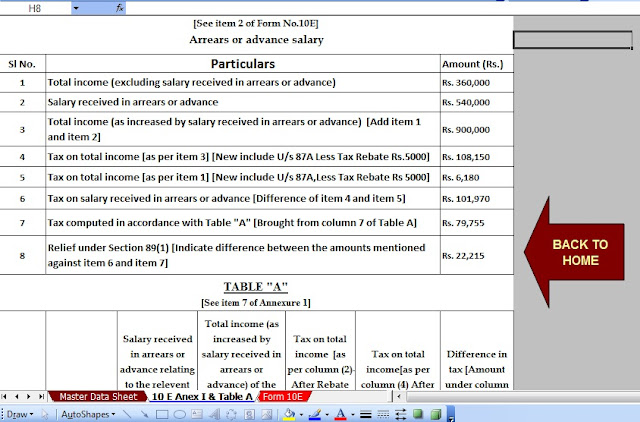Section 87A Rebate Limit Increased to Rs. 5000, Changes in Section 87A by Finance bill 2016,Hi Friends in union budget 2016 Section 87A Rebate Limit Raised to Rs. 5000. Rebate under Sec 87A: With the objective of providing relief to resident individuals in the lower income slab i.e. total income not exceeding Rs. 5,00,000, section 87A is proposed to be amended so as to increase the maximum amount of rebate available from existing limit of Rs.2,000 to Rs.5,000. Earlier this limit is only available for Rs 2000 now this limit is increased by Rs 3000 and now the total limit for Section 87A for AY 2017-18 is Rs 5000. Check more details regarding “Section 87A Rebate Limit Increased to Rs. 5000 – Budget 2016” from below…..
Section 87A Rebate Limit Increased to Rs. 5000, Changes in Section 87A by Finance bill 2016,Hi Friends in union budget 2016 Section 87A Rebate Limit Raised to Rs. 5000. Rebate under Sec 87A: With the objective of providing relief to resident individuals in the lower income slab i.e. total income not exceeding Rs. 5,00,000, section 87A is proposed to be amended so as to increase the maximum amount of rebate available from existing limit of Rs.2,000 to Rs.5,000. Earlier this limit is only available for Rs 2000 now this limit is increased by Rs 3000 and now the total limit for Section 87A for AY 2017-18 is Rs 5000. Check more details regarding “Section 87A Rebate Limit Increased to Rs. 5000 – Budget 2016” from below…..
[This Excel Utility can prepare at a time Individual Tax Compute Sheet + Individual Salary Sheet + Individual Salary Structure as per Non-Govt employees Salary Pattern + Automatic H.R.A. Calculation + Automatic Form 12 BA + Automatic Form 16 Part A&B and Form 16 Part B for F.Y. 2016-17 with all amended Income Tax Section as per Finance Bill 2016-17]
[This Excel Utility can prepare at a time Individual Tax Compute Sheet + Individual Salary Sheet + Individual Salary Structure as per Non-Govt employees Salary Pattern + Automatic H.R.A. Calculation + Automatic Form 12 BA + Automatic Form 16 Part A&B and Form 16 Part B for F.Y. 2016-17 with all amended Income Tax Section as per Finance Bill 2016-17]
Section 87A Rebate Limit Increased to Rs. 5000 from F.Y.2016-17
The existing provisions of section 87A of Income-tax Act, provide for a rebate of an amount equal to hundred per cent of such income-tax or an amount of two thousand rupees, whichever is less, from the amount of income-tax to an individual resident in India whose total income does not exceed five hundred thousand rupees.
With the objective to provide relief to resident individuals in the lower income slab, it is proposed to amend section 87A so as to increase the maximum amount of rebate available under this provision from existing Rs.2,000 to Rs.5,000.
This amendment will take effect from 1st April 2017 and will accordingly apply in relation to the assessment year 2017-18 and subsequent assessment years.Clause 45 To Finance Bill 2016
Clause 45 of the Bill seeks to amend section 87A of the Income-tax Act relating to the rebate of income-tax in case of certain individuals.
The aforesaid section provides that an individual resident, whose total income does not exceed five hundred thousand rupees, is eligible for the rebate in income-tax equal to hundred per cent. of such income-tax or two thousand rupees, whichever is less.
It is proposed to increase the amount of rebate allowable under the said section from the existing two thousand rupees to five thousand rupees.
This amendment will take effect from 1st April 2017 and will, accordingly, apply in relation to the assessment year 2017-2018 and subsequent years.
Amendment of section 87A.
In section 87A of the Income-tax Act, for the words “two thousand rupees”, the words “five thousand rupees” shall be substituted with effect from the 1st day of April 2017.











